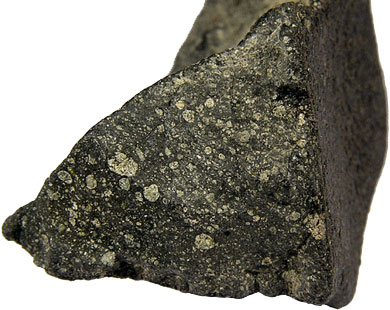
In "Aussie rocks may hold key to life on earth", the Sydney Morning Herald advises us that "Scientists have found DNA molecules in a meteorite that landed Down Under":
GENETIC material from outer space found in a meteorite in Australia may have played a key role in the origin of life on Earth, a study to be published tomorrow has found.
European and US scientists have proved for the first time two bits of genetic coding, called nucleobases, contained in the meteor fragment, are truly extraterrestrial.
Previous studies had suggested the space rocks, which landed near Murchison, Victoria, in 1969, might have been contaminated on impact.
The two molecules identified, uracil and xanthine, "are present in our DNA and RNA", said lead author Zita Martins, a researcher at Imperial College London.
An interesting characteristic of pop science media, is that you only find out what is seriously wrong with one theory about the origin of life when the article is promoting a different one. So we read,
Competing theories suggest nucleobases were synthesised closer to home, but Dr Martins said the atmospheric conditions of early Earth would have rendered that process difficult or impossible.Shoot that guy. He is some kind of creationist, isn't he, just like the Big Bang fundies.
A biology major friend informs me that to call uracil "genetic material" is like calling silica "computer material". Uracil is one of many small molecules found in RNA, a molecular complex that transfers the genetic information from DNA to proteins. Another friend advises that in life forms xanthine is a metabolic intermediate involved in the breaking down of purine nucleotides (not in building them up).
Of course, at the end, the punch line is offered to co-author Mark Sephton, of Imperial College, London:
"As more and more of life's raw materials are discovered in objects from space, the possibility of life springing forth wherever the right chemistry is present becomes more likely."
Well, not exactly. Given that we do not know how life originated, we can't really calculate the odds of it happening more than once.
Hope springs eternal. Sure, I wish that "they" were really out there too, but if "they" never return my calls, well ... at a certain point, long passed ...
By the way, another friend points to Stanley Miller's paper on RNA:
Stanley L. Miller*
Department of Chemistry and Biochemistry, University of California at San Diego, La Jolla, CA 92093-0506
Accepted May 8, 1998.
Abstract
High-temperature origin-of-life theories require that the components of the first genetic material are stable. We therefore have measured the half-lives for the decomposition of the nucleobases. They have been found to be short on the geologic time scale. At 100°C, the growth temperatures of the hyperthermophiles, the half-lives are too short to allow for the adequate accumulation of these compounds (t1/2 for A and G ≈ 1 yr; U = 12 yr; C = 19 days). Therefore, unless the origin of life took place extremely rapidly (<100 yr), we conclude that a high-temperature origin of life may be possible, but it cannot involve adenine, uracil, guanine, or cytosine. The rates of hydrolysis at 100°C also suggest that an ocean-boiling asteroid impact would reset the prebiotic clock, requiring prebiotic synthetic processes to begin again. At 0°C, A, U, G, and T appear to be sufficiently stable (t1/2 ≥ 106 yr) to be involved in a low-temperature origin of life. However, the lack of stability of cytosine at 0°C (t1/2 = 17,000 yr) raises the possibility that the GC base pair may not have been used in the first genetic material unless life arose quickly (<106 yr) after a sterilization event. A two-letter code or an alternative base pair may have been used instead.

